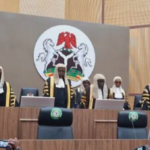With school closings due to COVID-19 and instructors required to deliver their lectures online, we are suddenly faced with the key issues that “open” universities have been battling with for over a decade. The issues pertain to delivering lectures to students in disparate geographical locations around the world. In Nigeria, for example, the open university system in that country – National Open University of Nigeria (NOUN) – had over 40 campuses the last time I counted, that are scattered all over the country. The NOUN was one of the foresights of the Obasanjo regime, which I personally believe is a great idea, even though there may be a few hiccups in the implementation, plus the unavoidable toll of the infrastructure challenges in Nigeria.
The plan is that students at the NOUN centers would receive instructions online. The implementation has not been the greatest due to the poor infrastructure in the country, as stated above, coupled with inconsistent leadership arising mostly from political appointments, although the current vice-chancellor appears to be quite capable. The modality of lecture delivery in NOUN includes some kind of online component, but then there are physical buildings at the centers, in-person classes, as well as physical stores that house physical textbooks. This is not the kind of online delivery that we need in the age of COVID-19. That is, for COVID-19, we need everything to go online, with zero brick-and-mortar components, zero in-person classes, and zero physical contacts of any sort.
As you are probably aware, as of yesterday, the entire New York State in the US, as well as many other major states in that country, including California, are on mandatory complete lockdown. This means that all citizens must be home-bound, as all nonessential businesses have been asked to shut down. (The essential businesses are hospitals, banks, and grocery stores.) The idea of course is to limit the gathering of people. This means that all schools, from kindergarten to universities, are closed, and students and teachers alike must operate from home one hundred percent. As a teacher in the New York State university system, I am affected. I will use the rest of this article to describe how I deliver my classes in the age of COVID-19. Of course, my approach is just one variety, with many other alternative approaches possible.
I need a computer in my approach. I use a Windows-based desktop running the Windows 10 operating system. I also need a camera, for which I acquired the 1080-pixel Pro Stream Webcam manufactured by Logitech. As far as teaching is concerned, I tend to be old-school, meaning that I like to write on the board. Moreover, the courses I teach, which are mostly in aerospace and mechanical engineering, can be technically challenging for students. This means that, unlike in some flipped-learning deliveries, I cannot expect students to study the materials on their own. I also do not teach by flipping through PowerPoint Slides. I need to explain the materials to students. So, I use a whiteboard and a digital pen.
For the whiteboard, I have opted for Microsoft Whiteboard; which is a bit primitive, particularly for the absence of the capability to create more than one “slide” (board) at a time from a file, and to save a lecture consisting of many slides in one shot. There is an alternative, however: OpenBoard, available at <https://github.com/OpenBoard-org/OpenBoard>, which is a lot more user-friendly than Microsoft Whiteboard, but I am using the latter for now. For writing on the whiteboard, I use the XP-PEN DECO 01V2 tablet. This slate gives me a fairly large writing area, and it supports different colors, which is quite handy for drawing complicated pictures on the board.
Lastly, I need a streaming (web conferencing) software. There are several options here: Google Meet, Zoom, Skype, and so on. I am set up to use Zoom and Google Meet, but since some of my students live in China, where Google products are not allowed, I have opted for Zoom. Note that, depending on what I pay for, there could be limitations on the number of participants (students) allowed to connect at any one time.
Now, we have to put everything together. First, I would have set up a class meeting on Zoom to take place at a particular date and time, and to which I would have invited all the students – usually by sending them an email of the date, time, and the link on the web. Before the meeting, I would insert the graphical components of my lecture into the whiteboard “slides,” organized according to which graphics will go with the materials I will be lecturing on in a particular slide. At the time of the lecture, I would turn on the camera, in case students want to see me; launch Zoom to begin the teleconferencing and ask Zoom to record the session. Then, I would bring the whiteboard to the foreground, pick up the tablet and the pen and begin teaching as I would in a normal old-fashion classroom with a blackboard. Students can stop me at any time during the lecture to ask questions. At the conclusion of each lesson, I would upload the video into Blackboard for the students to access. Examinations are managed through Blackboard, with and without the Respondus software for proctoring.
As you can see, in the age of COVID-19, you certainly can teach an old dog some new tricks!



